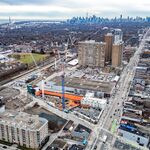W. K. Lis
Superstar
How We’ve Subsidized Driving (and What To Do About It)
From link.So this is a fertile area of research for anybody who’s interested in sustainable transportation because for the last hundred years our transportation planning has really been oriented toward accommodating automobile travel. One of my research studies titled “Not So Fast,” looks at the way planning is biased in favor of faster modes, faster and more expensive and resource intensive modes, like automobile travel and air travel, to the detriment of slower, but more affordable and resource efficient, modes — like walking and bicycling and public transit. As a result we’re favoring sprawl development over compact infill.
You could frame it in terms of “our planning is automobile dependent or automobile-oriented leads to automobile dependent transportation system.” You can frame it in terms of social equity. So, somebody who for any reason cannot or should not or prefers not to drive for a particular trip is not getting their fair share. Or you can frame it in terms of return on investment. It turns out that in most communities, a typical community is spending somewhere around $20-$25 annual per capita on sidewalks.
If it’s a city that’s making major investments in bicycle facilities, that’s typically $20 to $40 a year per capita on bicycle facilities. A typical community is spending somewhere between hundred and $200 a year in total to subsidize public transit. People in that community are spending, as you’ve mentioned, well, the households are spending somewhere around $5,000 a year per car to own and operate a car. They’re spending about a thousand dollars, somewhere between $800 and a thousand dollars a year in total on roadway facilities. Probably, although it’s highly variable and a little difficult to calculate, but somewhere between $2,000 and $4,000 on subsidized off-street parking, government mandated off-street parking.
So you sum that together and you’re talking many thousands of dollars per year, per capita, to lead an automobile-dependent lifestyle. We know that there’s latent demand that many people would prefer to drive less and rely more on walking and bicycling and public transit if we’d made more investments. So, some of my current research is exploring, and my conclusion suggests, that there’s a very good positive return on investment. If we were to take a small portion of the money that communities are investing in roads and parking facilities, and that consumers are spending on their cars, and reinvest it to improve non-automotive modes, that virtually everybody is better off overall.
So the analysis that I’m doing, and some of which is discussed in my book, “New Mobilities,” the analysis that I’m doing, does build a pretty strong case that most North American communities have far more automobile ownership and far more automobile travel than what people would choose if we were willing to respond to that latent demand.
The big challenge is that the spending on roads and parking facilities is pre-programmed. From your perspective as a consumer, you feel like you’re being tapped. You’re being required to spend money on roads and parking, regardless of whether you drive. From that perspective, if those are fixed, sunk costs, you feel like, “Hey, I might as well get a car so I can get my money’s worth from that expensive garage or parking space at my house.”
Some of the interesting experiments are when, in a particular location, say a job site or an apartment building or something like that, they go from parking being free to parking being either cashed out or unbundled. So cashed out means that people who don’t drive. So, if you get to work by walking or bicycling or car sharing or public transit, that you get the cash equivalent of the parking subsidies that go to your workmates who drive. Parking unbundling means that if you rent an apartment, you’re no longer required to pay for a parking space, that the parking is rented separately.
Instead of paying $2,000 a month for an apartment that comes with a parking space, you would pay $1,800 a month for the apartment, but $200 a month for each parking space you want. So if you’re a car-free household, you’re no longer forced to pay for that parking space that would sit empty. The experience indicates that when a business, when a employer cashes out the free parking or a apartment building unbundles the parking, that you get somewhere between a 10 and 30 percent reduction in car travel or car or automobile ownership — that typically 20% percent of car traffic is the result of this current practice of providing free parking to employees.
So we’re increasing our traffic congestion and our traffic accidents and our air pollution and consumer costs overall, because we say, yeah, we’ll give you this very valuable subsidies, worth between $100 and $200 a month, to drive. But if you use the other modes, we give you nothing. So those are the kind of experiments where case studies that we have now that demonstrate that you could call it latent demand for not driving. Some people will give up driving or drive less. If they’re given more incentives, more better walking, bicycling, public transit that are financial incentives.
This guides us to identify the transportation demand-management strategies: the smart, effective ways to reduce traffic problems simply by correcting some of the existing market distortions that result in economically excessive automobile travel and sprawl.





/https://www.thestar.com/content/dam/thestar/news/gta/2019/09/08/dont-blame-the-city-mowing-the-boulevard-is-a-homeowners-job/fixer.jpg)













